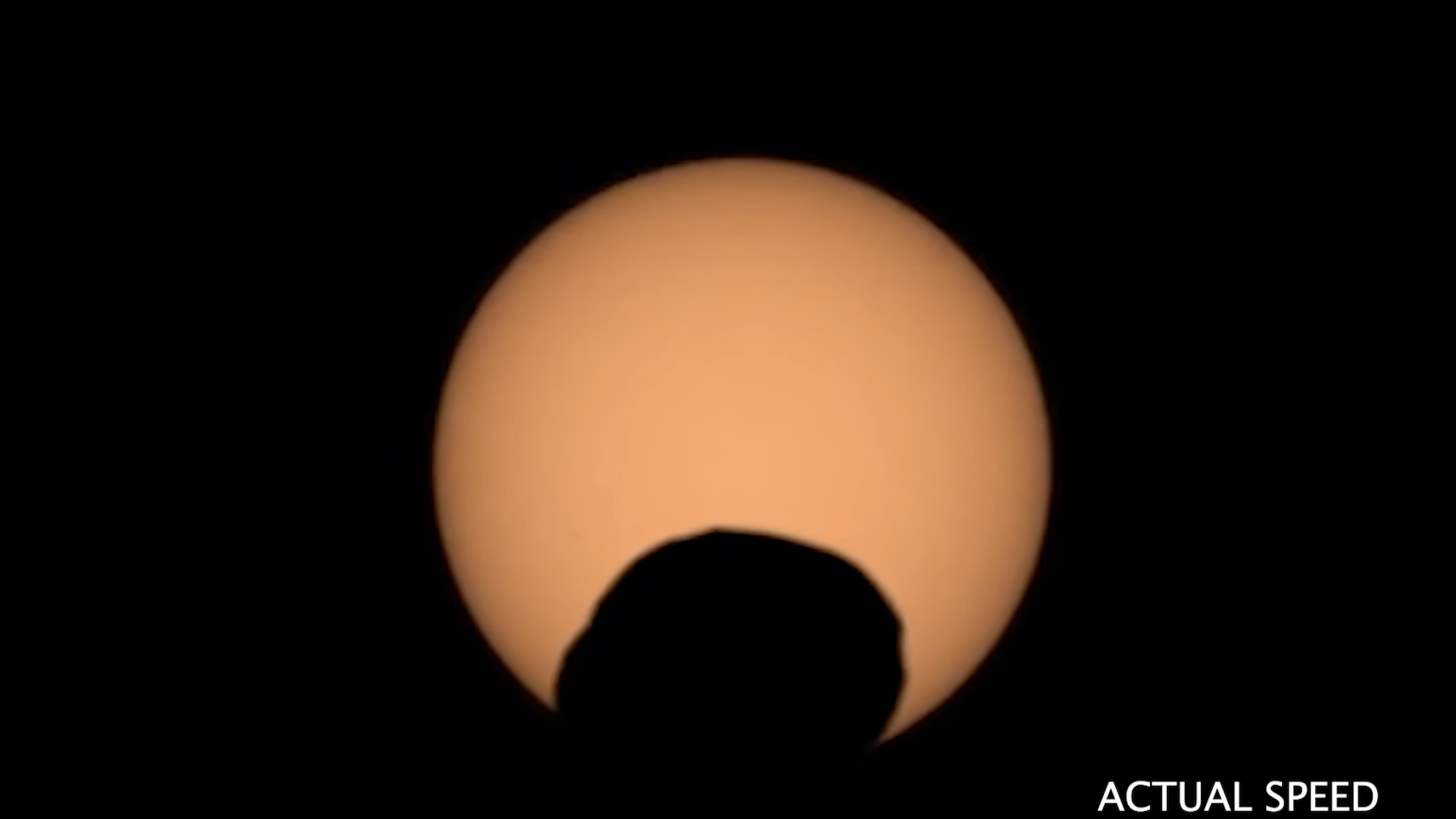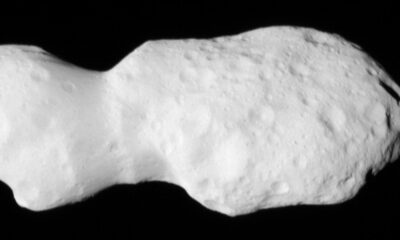Gadgets
Googly-eyed potato eclipse filmed by NASA’s Perseverance rover

Phobos: The Swift Moon of Mars
Phobos, the moon of Mars, is no slowpoke. With its small size, unique angle, and rapid orbital pattern, Phobos completes a full orbit around Mars approximately every 7.6 hours. This frequent movement increases the chances of Phobos passing in front of the Sun, creating a rare eclipse phenomenon. If you were on Mars at the right place and time, you could witness Phobos briefly turning the Sun into a giant googly eye. NASA’s Mars Perseverance rover captured this incredible event in February and managed to photograph another eclipse just seven months later.
Recently, NASA showcased the latest Phobos eclipse seen on September 30th from the perspective of the Perseverance rover in Mars’ Jezero Crater. The brief eclipse lasted only 30 seconds, making Earth’s eclipses seem much longer in comparison. The footage of Phobos was captured using Perseverance’s Mastcam-Z, an instrument co-designed by Arizona State University.
Discovered by astronomer Asaph Hall in 1877, Phobos and its companion Deimos were named after the twin Greek gods of fear and dread. The origins of these moons remain a mystery, with experts theorizing that they may have originated as captured asteroids or debris from the early Solar System formation.
[Related: A Martian solar eclipse turns the sun into a giant googly eye.]
Despite its small size of 17 miles wide, Phobos is about 157 times smaller than Earth’s moon. Both Phobos and Deimos are slowly moving closer to Mars, in contrast to Earth’s moon which is moving away from Earth. This movement suggests that the Martian moons may eventually collide with the planet or break apart to form a ring similar to Saturn’s, within the next 50 million years.
For now, there will be more opportunities for Perseverance and future human visitors to document these unique celestial events on Mars.
-

 Destination8 months ago
Destination8 months agoSingapore Airlines CEO set to join board of Air India, BA News, BA
-

 Breaking News10 months ago
Breaking News10 months agoCroatia to reintroduce compulsory military draft as regional tensions soar
-

 Gadgets4 months ago
Gadgets4 months agoSupernatural Season 16 Revival News, Cast, Plot and Release Date
-

 Tech News1 year ago
Tech News1 year agoBangladeshi police agents accused of selling citizens’ personal information on Telegram
-

 Productivity12 months ago
Productivity12 months agoHow Your Contact Center Can Become A Customer Engagement Center
-

 Gadgets4 weeks ago
Gadgets4 weeks agoFallout Season 2 Potential Release Date, Cast, Plot and News
-

 Breaking News10 months ago
Breaking News10 months agoBangladesh crisis: Refaat Ahmed sworn in as Bangladesh’s new chief justice
-

 Toys12 months ago
Toys12 months ago15 of the Best Trike & Tricycles Mums Recommend





















